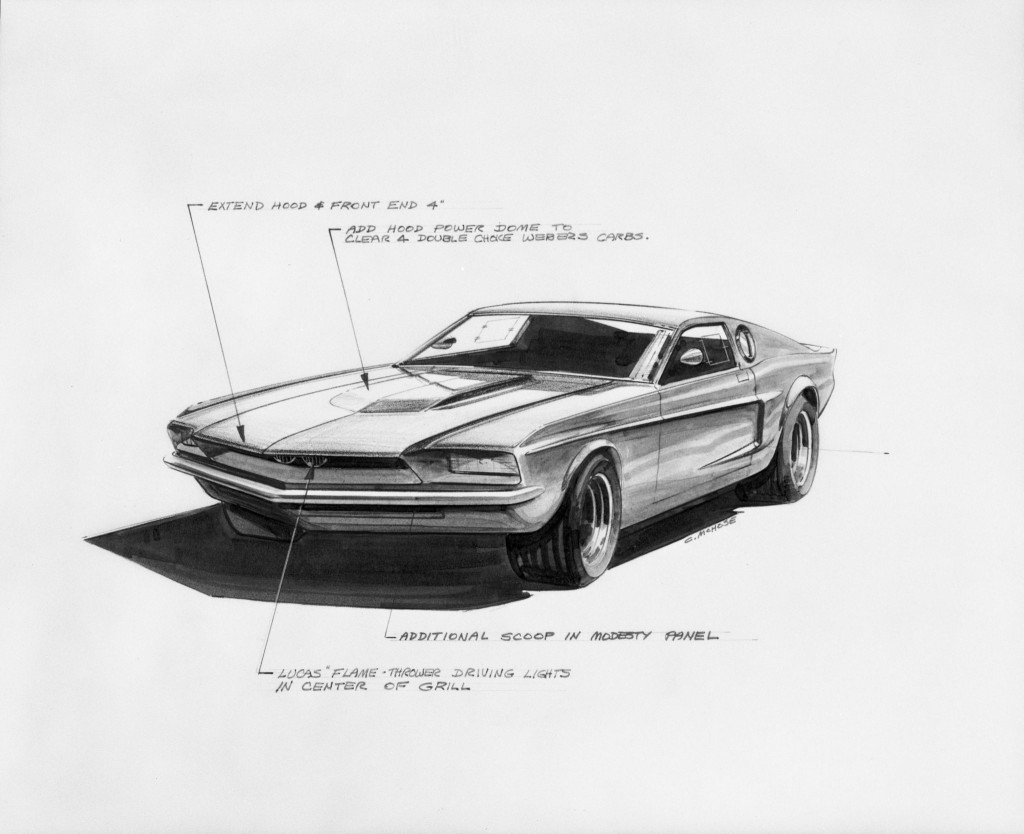
The power-dome hood in this sketch is very similar to the design on the 2010-2011 Mustang. (Courtesy of Ford Motor Company)
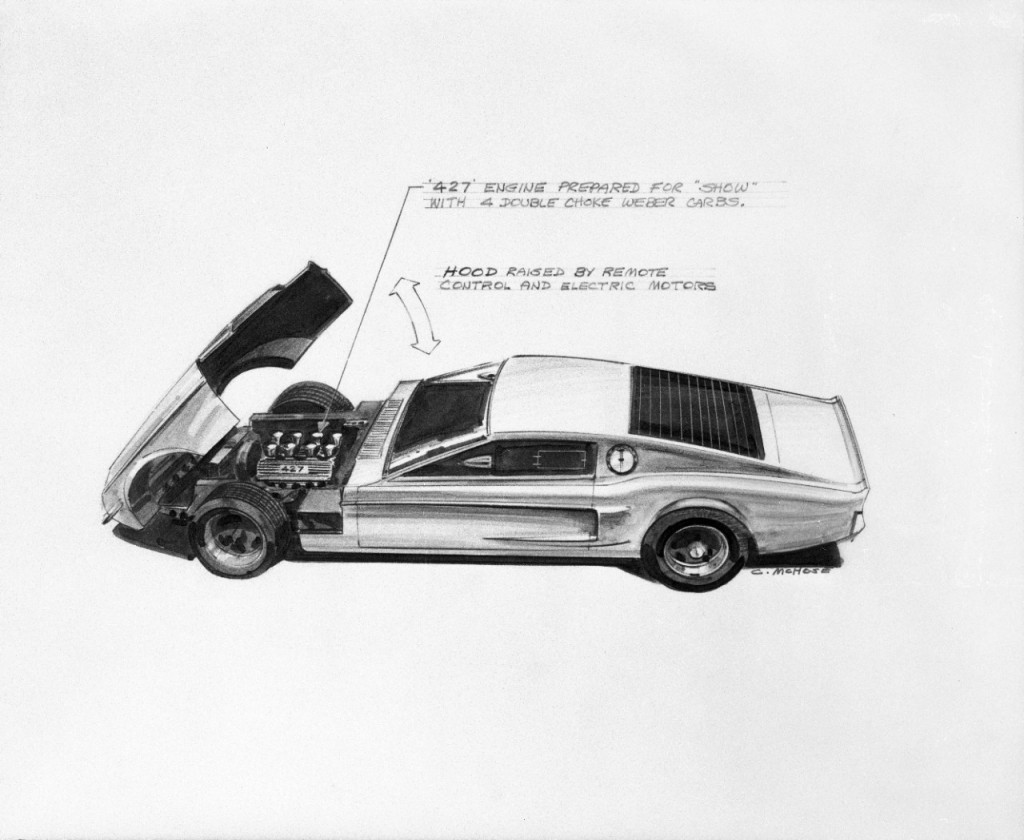
In this early design sketch, the front bodywork formed a single piece hinged at the front to expose the engine compartment. A 427-cubic inch V8 with four carburetors was meant to power the concept. (Courtesy of Ford Motor Company)
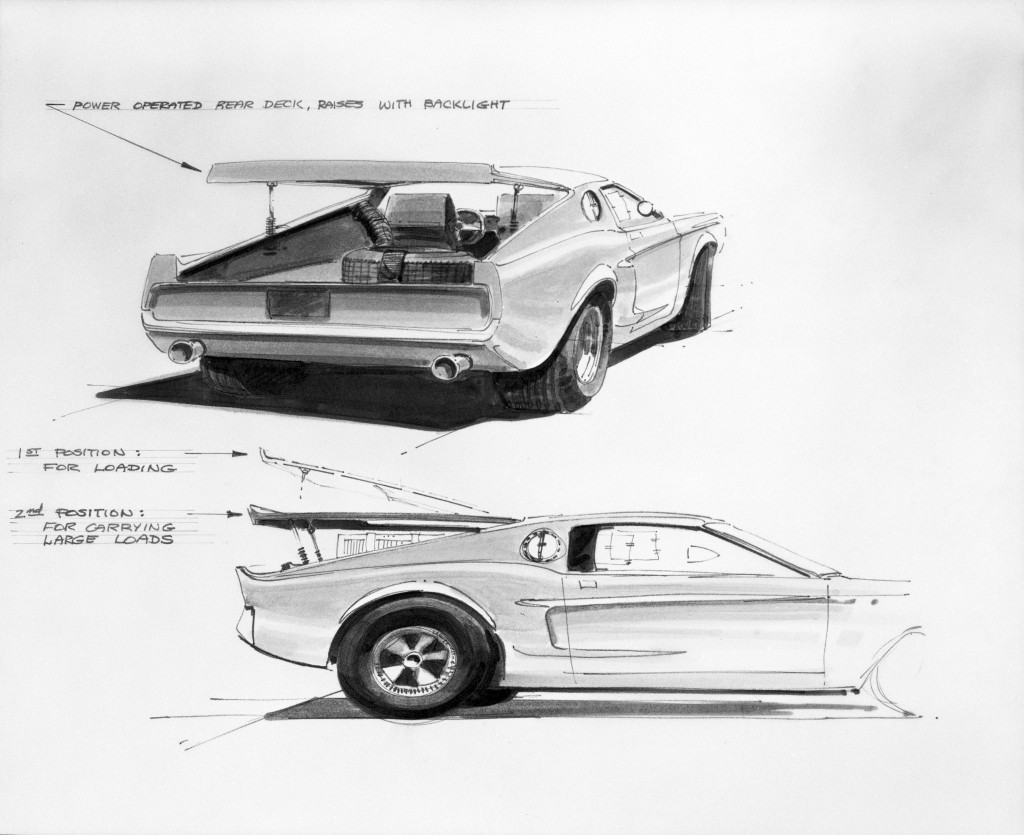
The two-position hatchback was intended to accommodate longer objects in a near horizontal position or open wider for cargo loading. (Courtesy of Ford Motor Company)
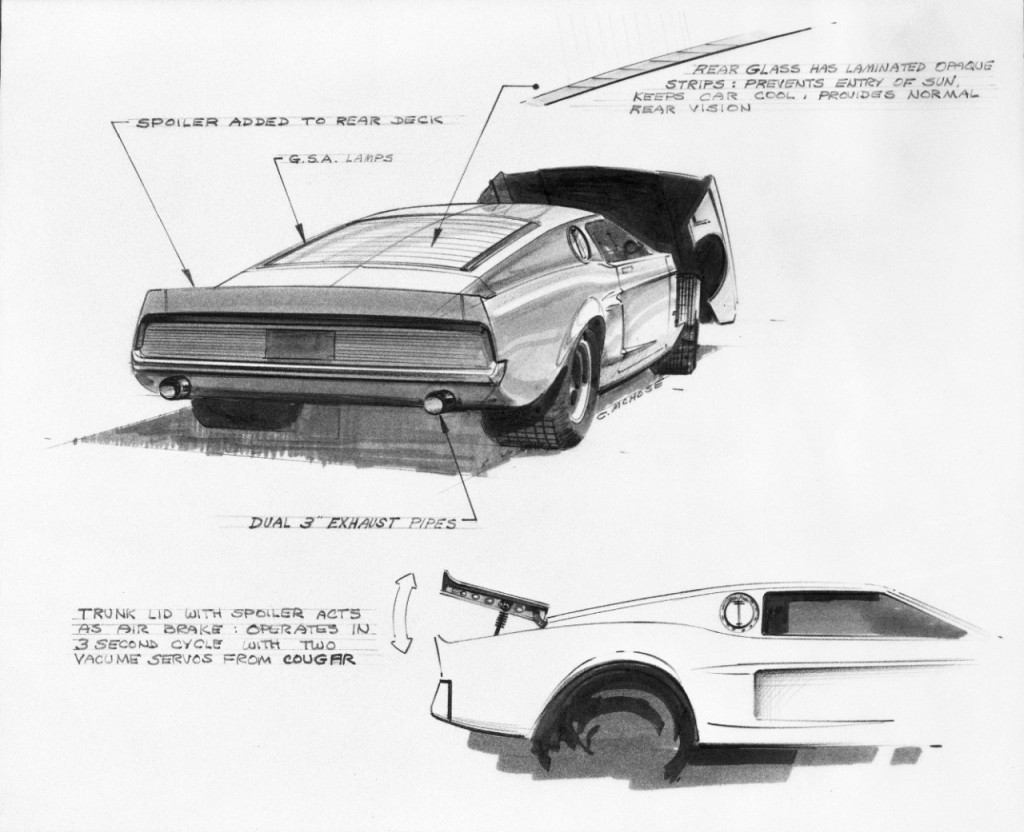
Sketch of 1966 Ford Mustang Mach 1
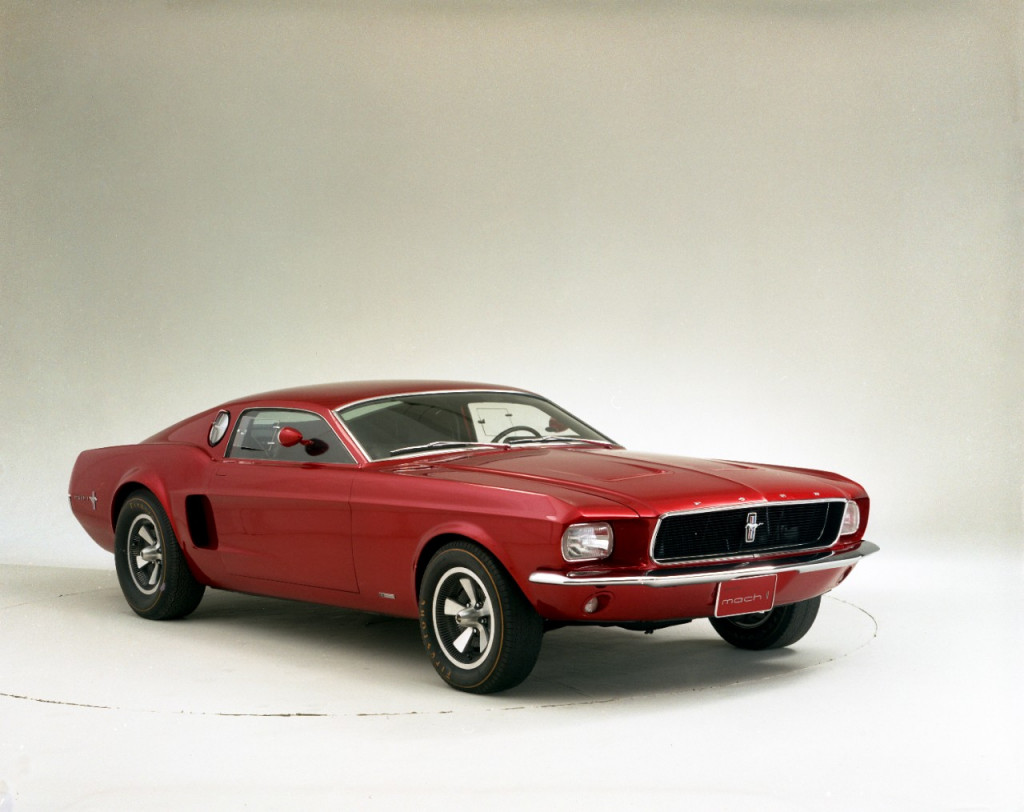
The Mustang Mach I concept as it was shown at auto shows in late 1966 and into 1967. The power-dome hood from the sketches never made it to the show car. (Courtesy of Ford Motor Company)
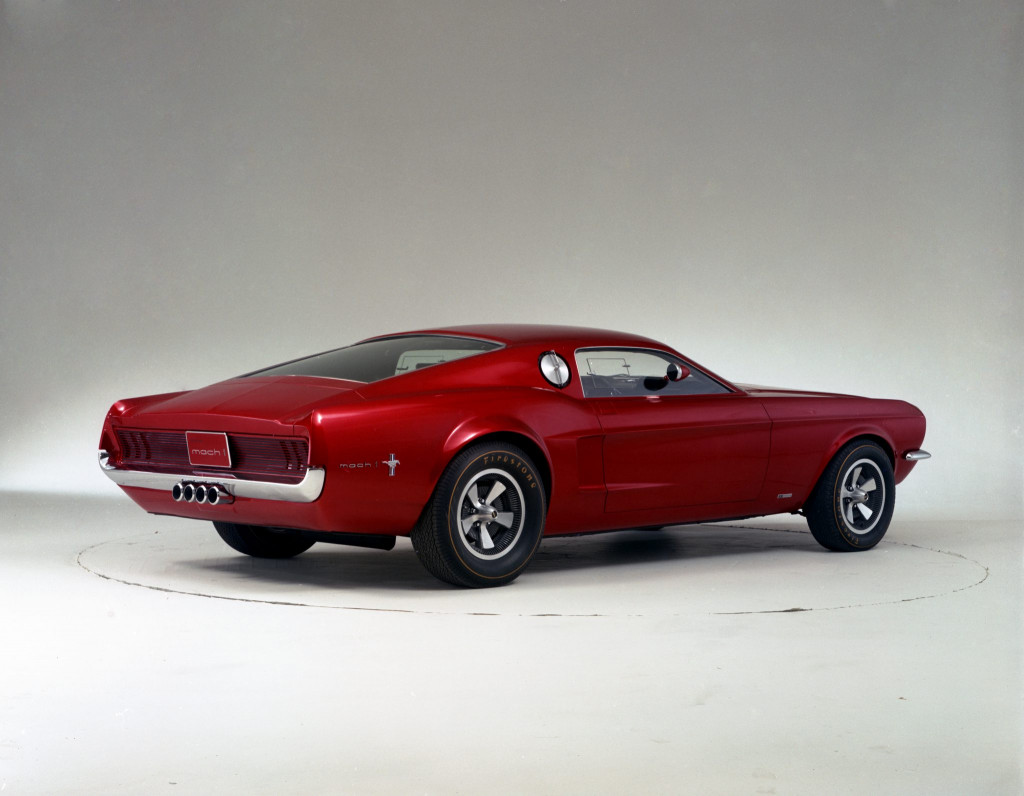
The rear of the 1966-1967 Mustang Mach I had a fastback that sloped down to the end of the decklid and a concave rear fascia similar to the 1967 to 1968 production models. (Courtesy of Ford Motor Company)
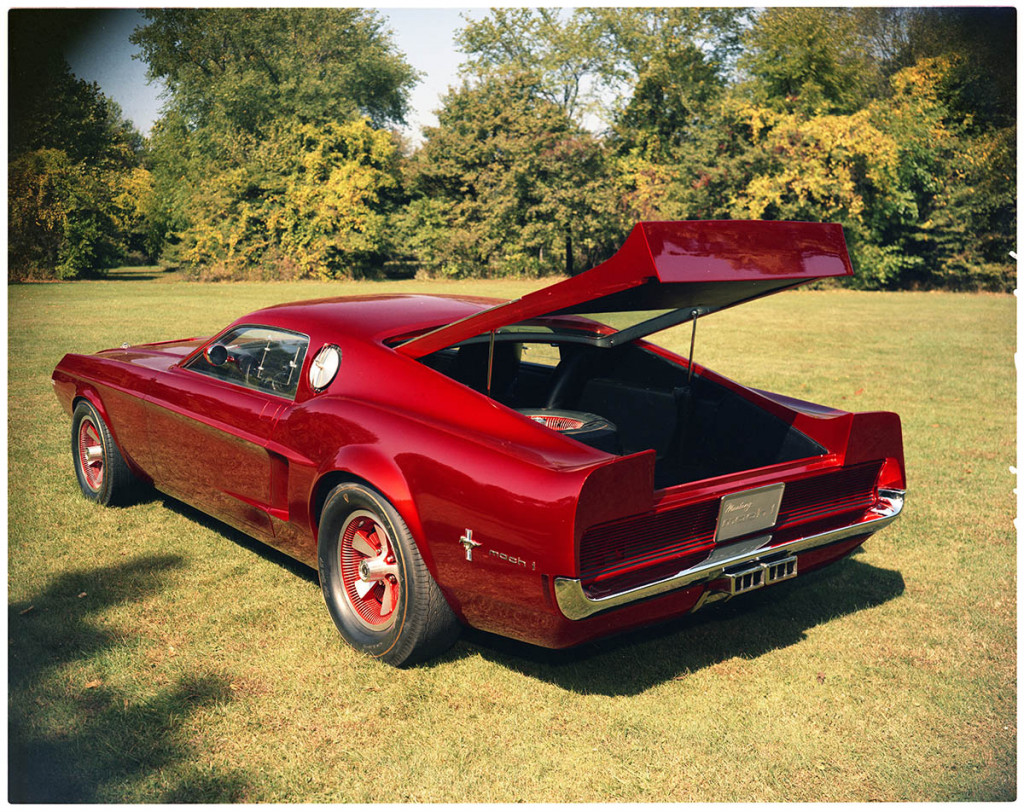
The Mach 1, as it was shown at the 1967 Detroit Auto Show with a face closer to production Mustangs of the time. The low-cut roofline and racing-type fuel cap never made it to production, but the hatchback did eventually arrive on the 1974 Mustang II. (Courtesy of Ford Motor Company)
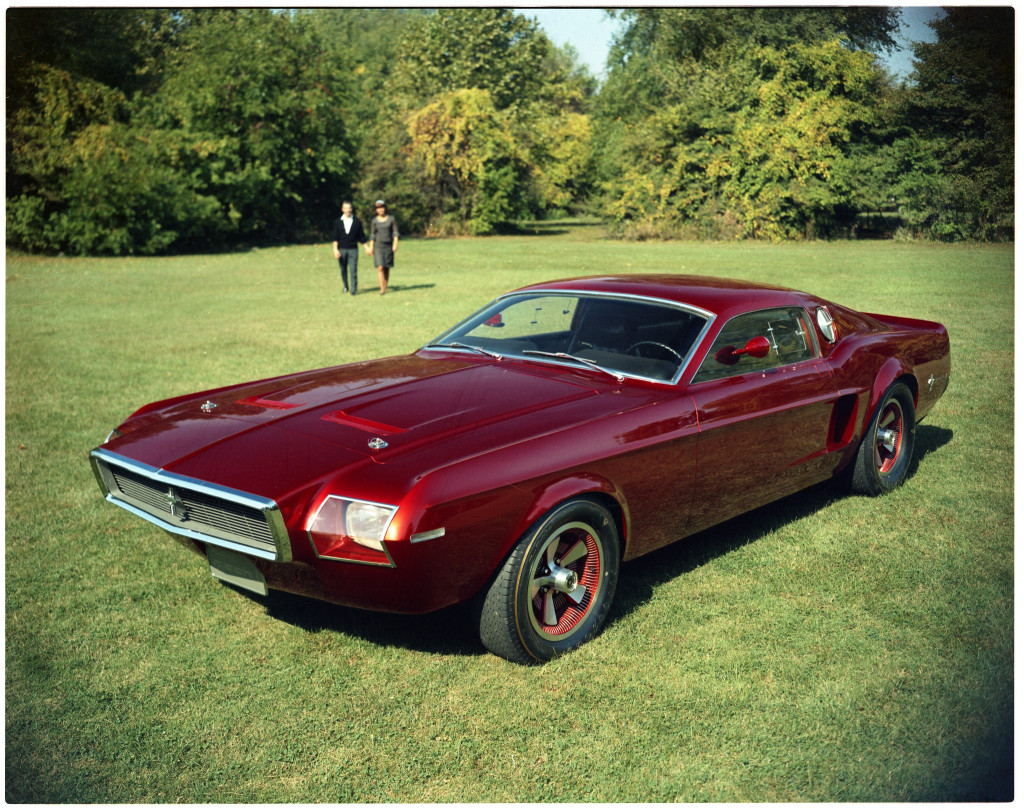
For the 1968 auto show season, the designers crafted a new front end that took inspiration from the 1963 Mustang II concept with its covered headlights and chrome rimmed protruding grille. (Courtesy of Ford Motor Company)
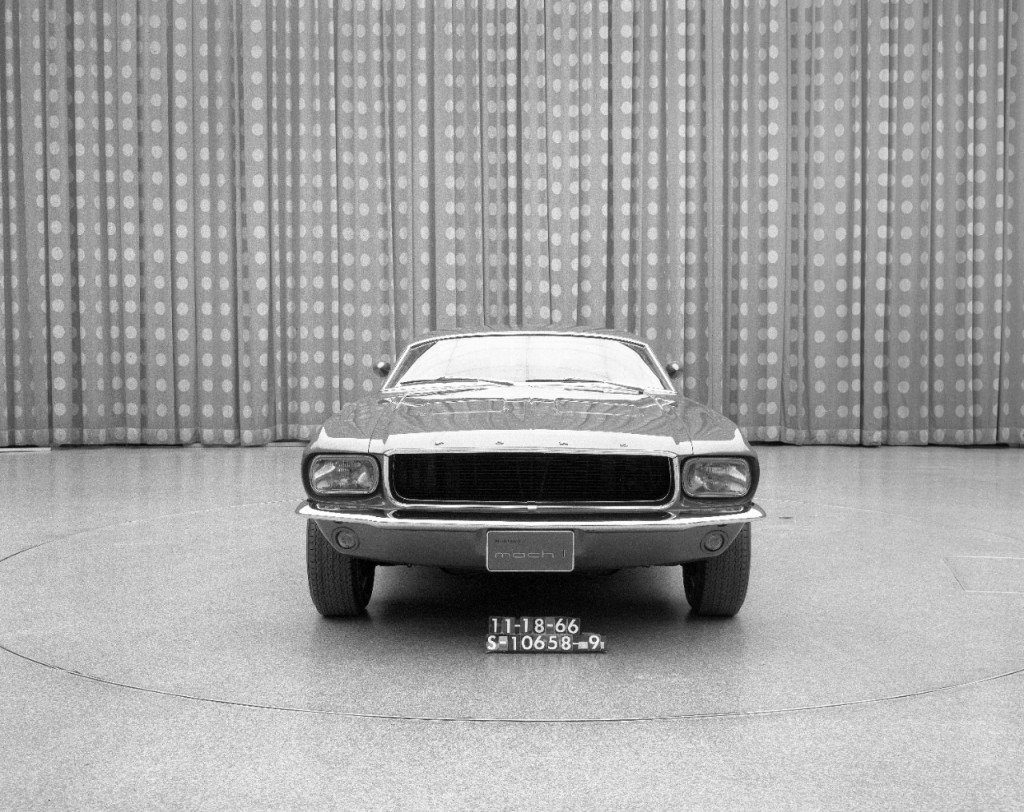
Front view of the Mustang Mach I concept with oval headlights similar to those used on the first design model of what would become the 1965 Mustang. (Courtesy of Ford Motor Company)
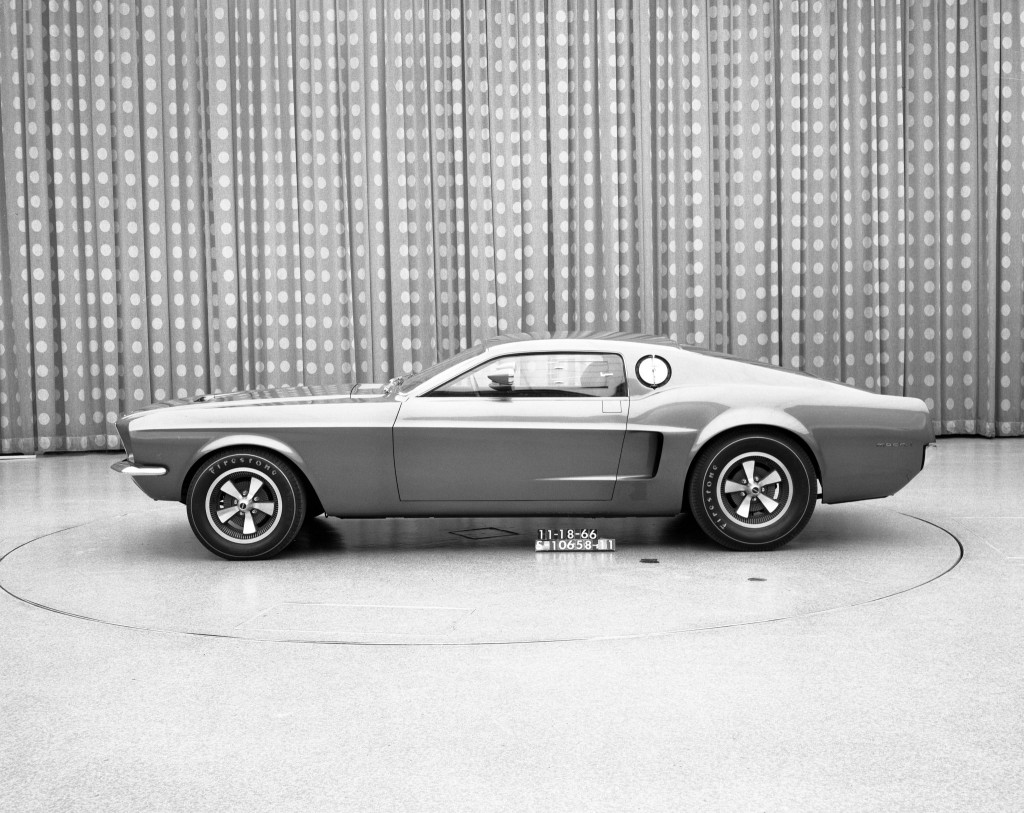
The low roofline of the Mustang Mach I is clearly visible in this profile view. (Courtesy of Ford Motor Company)
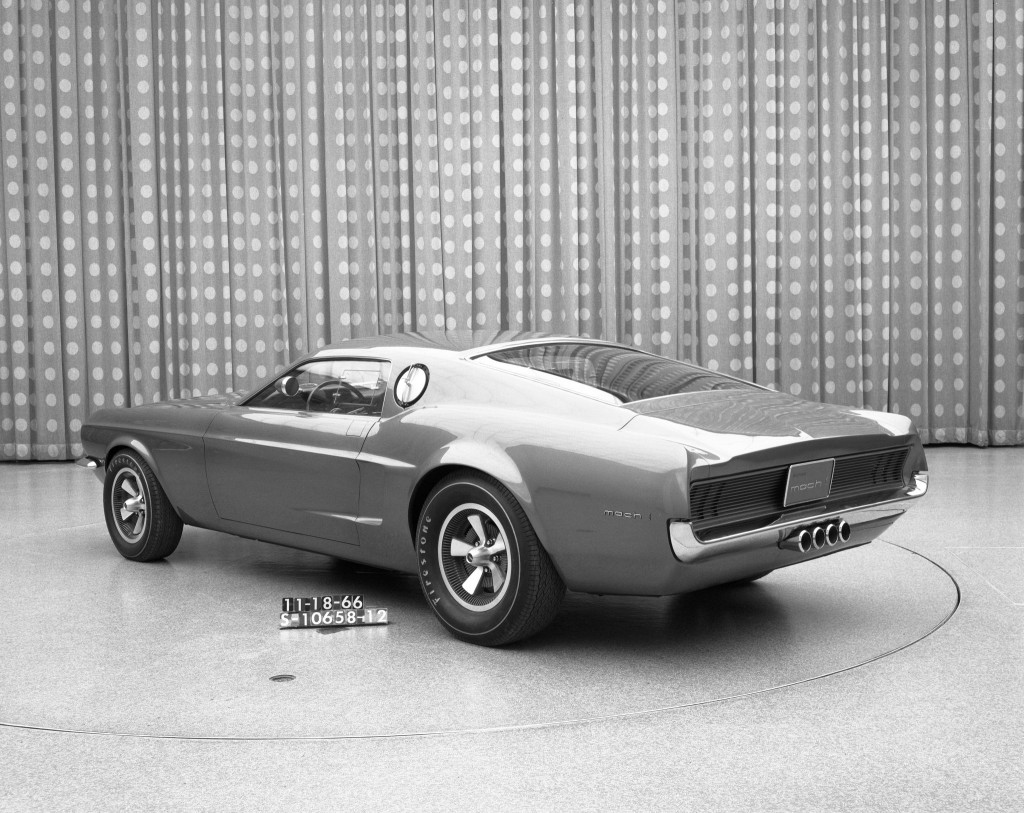
The rear of the Mustang Mach I traded the twin 3-inch tail-pipes from the sketch for four smaller centrally mounted pipes. (Courtesy of Ford Motor Company)
This article, written by David P. Castro, was originally published on ClassicCars.com, an editorial partner of Motor Authority.